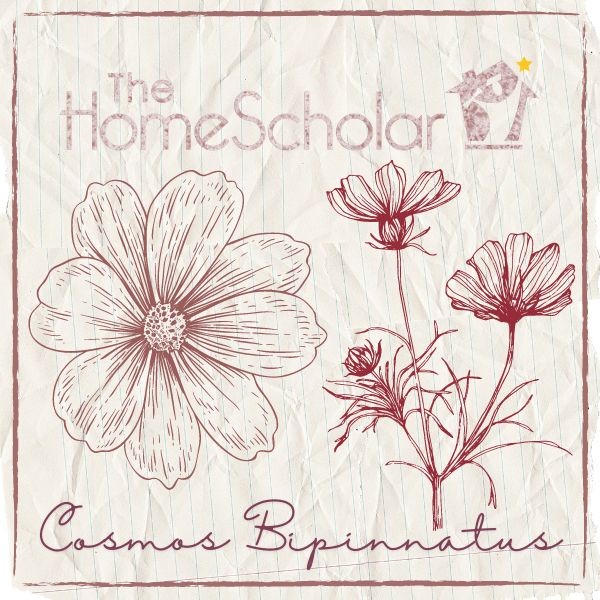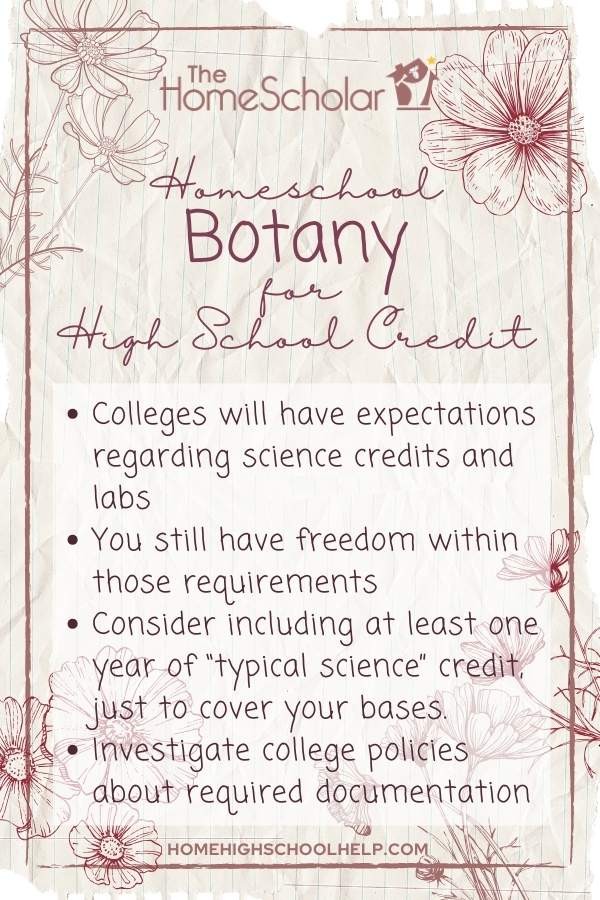Colleges typically want to see three sciences and at least one science lab on the high school transcript, but you still have a lot of freedom within those requirements.
From a homeschool perspective, I have seen many successful homeschoolers include botany for their science courses, and they have not had a problem gaining admission to their top colleges. Colleges in general like to see three sciences in high school, and in general they want at least one of those sciences to be a lab science. Beyond that, however, colleges don’t usually specify WHICH sciences you need to teach. Sometimes people assume that science has to be biology, chemistry and then physics, but that isn’t necessarily the case. For students considering a career in science, the traditional biology, chemistry, and physics courses are a strong foundation. However, electives like botany can enrich the transcript and demonstrate diverse interests. I usually suggest at least one year of science in biology, chemistry and physics, just to cover your bases but every year colleges are becoming more and more accepting of delight directed learning classes.
- Seed Germination Experiment: Students can investigate factors like light, temperature, and water on seed germination. They can set up a controlled experiment to monitor seed sprouting under different conditions, recording growth data and observations.
- Photosynthesis Lab: Using spinach leaves and sodium bicarbonate, students can conduct a photosynthesis experiment by measuring the rate of oxygen production. This can help them visualize how light energy is converted into chemical energy.
- Plant Propagation Techniques: Students can practice asexual plant reproduction techniques, such as stem cuttings, leaf cuttings, and grafting. This hands-on activity demonstrates how plants reproduce and regenerate.
- Soil Composition and Plant Growth: Test different types of soil (sand, clay, loam) to see how each affects plant growth. Students can monitor and measure plant height, leaf color, and root development over time.
- Flower Dissection and Anatomy: Students can dissect flowers to study the reproductive organs. This activity helps them understand the processes of pollination, fertilization, and seed development.
- Transpiration Experiment: Use leafy plants and plastic bags to measure the amount of water that plants lose through transpiration. Students can observe water vapor and relate it to plant physiology.
- Effect of Light on Plant Growth (Phototropism): Set up an experiment to see how plants grow toward light sources (phototropism). By manipulating light direction, students can explore how plants adapt to their environment.
- Leaf Chromatography: This experiment allows students to separate and observe pigments in leaves, helping them understand the process of photosynthesis and the importance of chlorophyll.
- Fungi and Plant Symbiosis Study: Examine the role of fungi in plant health by growing plants with and without the presence of fungi (e.g., mycorrhizae) to observe the difference in plant growth and nutrient uptake.
- Dendrochronology (Tree-Ring Analysis): Have students analyze tree rings to study historical climate conditions. This can tie in lessons about plant growth, environmental factors, and ecological history.




